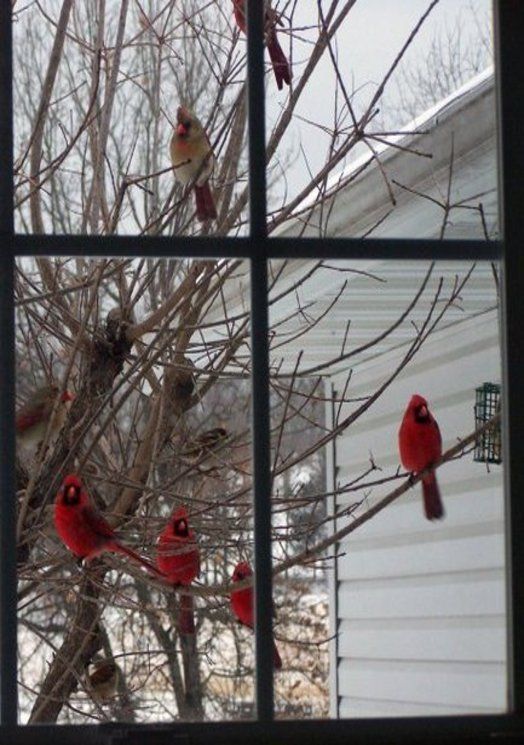by DJ Featherton

Is there anyone who doesn’t know what a Cardinal is? Even non-birders will look twice at this beautiful and common bird. The Cardinal is popular even in the western half of the country where there are no Cardinals. Their bright red image is on decorative plates, greeting cards, wall art and sportswear of all kinds bearing “The Cardinals” team name. And why not? Their striking red color and distinctive sharp call steals the show and makes the Cardinal the leading character of your backyard drama. Let’s celebrate the Iconic Cardinal!
So where do birds get their names? Many names came from the first person to see and study a specific bird like the Cooper’s Hawk and Wilson’s Phalarope. Some birds are named after early European royalty when early Europeans migrated to America. The Baltimore Oriole is named after the colors on the coat-of-arms of Lord Baltimore. So, when these early settlers first saw this brilliant red bird with his black mask and authoritative tall crest, the name “Cardinal” was a no brainer.

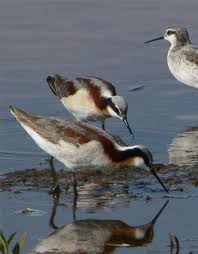
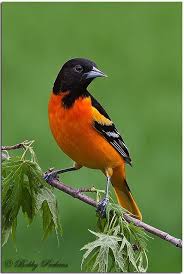
The female Northern Cardinal is more muted in color but makes a beautiful mate for her showy partner. Interestingly, diet determines the brightness of the male Cardinals color. Science has found that the brighter his color, the more attractive he is to females and the more dominant he is in his territory. The brighter red Northern Cardinals are even better providers for their broods.

Cardinals mate for life. Well, pretty much. It has been found there is a 20% “divorce rate” between breeding times when the male Cardinal just leaves home. Maybe it’s for the better, because males sometimes enjoy the company of strangers, and fidelity gets left behind. Otherwise, the male is a major caretaker to the chicks and his mate. Though not exceptionally aggressive like the Jays, the male will protect and defend his nest and territory with his life. Most of us have seen a Cardinal bashing into a glass window over and over again, when seeing his own reflection, thinking it’s an intruder. Oh well, his intentions are noble.


The cardinal, otherwise known as the Northern Cardinal, is a year-round regular at the feeder whether you are in town or country. Their bright red shows off even more in a fresh white snow. They like platform feeders with sunflower and safflower seeds. Sometimes I toss cracked corn on the patio which always brings them up to the house at early morning and sundown. Also, at these times everyone will hear their shrill, but beautiful whistling calls. Their pew-pew-pew-pew and birdy-birdy-birdy calls are like no other birds. Back in college I would stay up all night writing papers. I wouldn’t watch the clock, but at the dawning of the sun would come the birdy-birdy-birdy call outside my window, telling me to finish up and get ready for class. Dependable as clockwork! Yup! Let’s celebrate the iconic Cardinal!
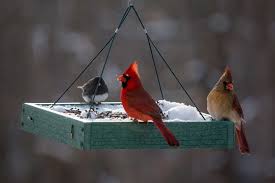
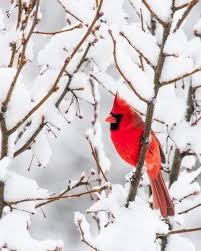
Did you know there is a yellow Cardinal? They are rare, and I have never seen one. Should you see one, better notify Audubon right away and get your camera out! This is a genetic variation called xanthochroism causing male Cardinals to be yellow instead of red. I know, too much information. But, here’s more. Did you know that Cardinals molt? Yep, in the late summer and early fall after breeding season, the Cardinals will molt the feathers from their head, and sometimes tail feathers, too. This leaves the proud, crested bird with a bald and unattractive head. Thank goodness this condition is short-lived. If I were a Cardinal, I’d stay under the bush the whole time!
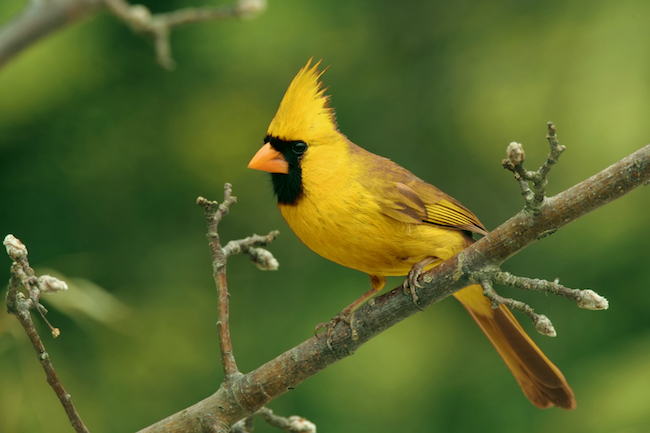

In the conservation department, the Cornell Lab of Ornithology shows the Northern Cardinal as “low concern”. The warmer temperatures are increasing their range up into Canada. It’s also believed that large numbers of backyard feeders are a big help to their population. Are these birds popular? Probably the number one bird in America! Keep your feeders full! We will always love and celebrate the iconic Cardinal.
